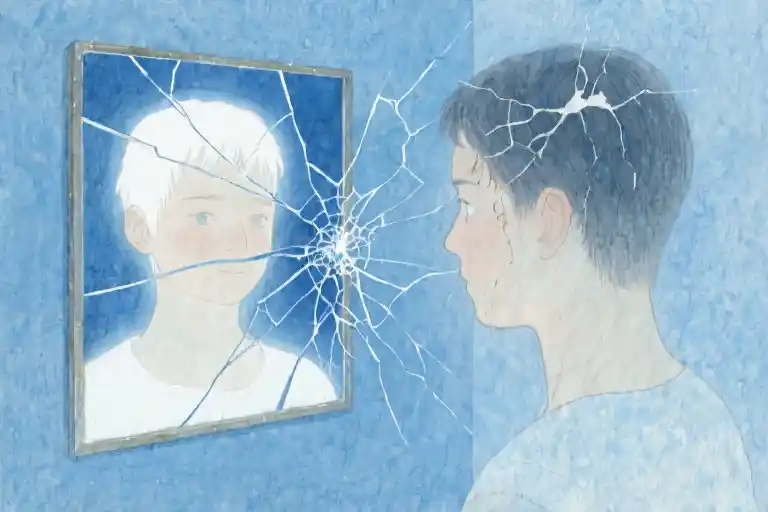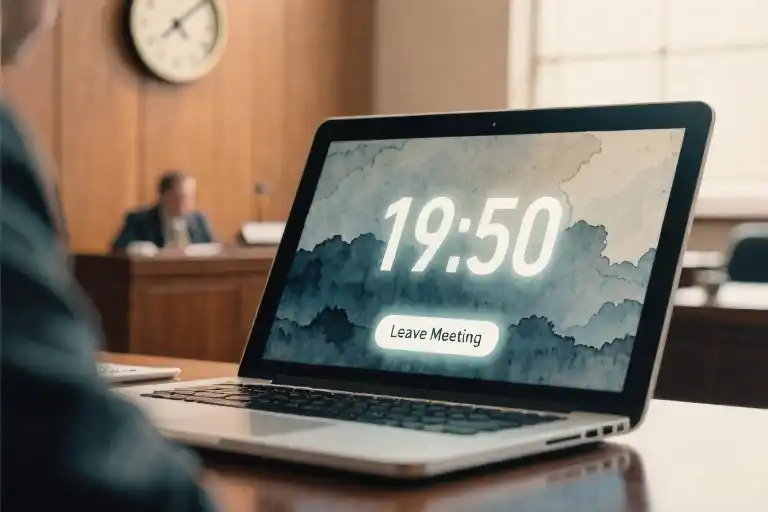The digital clock glows 3:07 AM in corrosive green, that hour when memories bleed through the bandages of daytime distractions. Your hand moves across cold sheets, fingers curling into fabric where warmth should be—a reflex older than heartbreak. On the nightstand, your phone screen blinks awake with the last message still pinned at the top, timestamped 47 days ago. The three dots that never became words. The goodbye that never came.
Why does love slip through our fingers like clenched sand? The harder we grasp, the faster it drains away until all that remains are grit-filled creases in our palms. That’s the cruel paradox no one prepares you for: the relationships that demand the most effort often yield the least return. You could chart constellations in the space between their promises and their presence, measure light-years in the silence since their last reply.
Outside, a car alarm wails then chokes into silence—the perfect metaphor for how modern love dies. Not with Shakespearean drama, but with read receipts and vanishing notifications. The pillow still smells faintly of their shampoo, though you’ve washed the case twice. Your ribs still brace for the weight of an arm that won’t return. This is how abandonment settles in: not as a clean fracture, but as phantom limb syndrome of the heart.
We all know the textbook stages of grief, but no one warns you about the loopholes. How bargaining wears sweatpants and stalks Instagram stories at 3 AM. How denial microwaves dinner for two out of muscle memory. The articles claim “time heals,” but they never specify whether that’s linear time or the warped chronology of sleepless nights where minutes stretch like taffy while months collapse like concertina wire.
That unanswered text chain isn’t just digital artifacts—it’s an archaeological dig of could-have-beens. Each blue bubble a shard you keep reassembling, searching for the fracture point where everything went wrong. Was it the joke that landed flat in July? The rainy Tuesday you chose work over dinner? The brutal math of relationships reveals itself: you’re doing quadratic equations while they stopped counting altogether.
Here’s the secret they don’t put in breakup playlists: healing begins when you stop checking for footnotes in your love story. When you realize some silences aren’t puzzles to solve, but exits you didn’t notice being taken. The bed feels vast now, but one morning you’ll roll over and the emptiness won’t startle you. The phone will light up with something other than hope. Dawn will come without bargaining.
For now, breathe through the 3 AMs. The sand isn’t vanishing—it’s just making space for something your grip can actually hold.
When Love Becomes a One-Way Street
The taxi meter keeps ticking as Old Wang makes the same detour for the 365th consecutive day. His worn leather seat still carries the ghost impression of her perfume, his rearview mirror still reflexively checking for that familiar silhouette in apartment 5B’s window. This 47-year-old Beijing cab driver could save 15 minutes by taking the highway, but he’d rather pay the toll of remembering. His story isn’t unique – just painfully human.
Duke University’s longitudinal study on post-breakup behavior reveals an uncomfortable truth: the rejected partner typically exerts 73% more effort to salvage the relationship than the initiator. Like Sisyphus pushing his boulder, we exhaust ourselves trying to climb hills that only exist in our hearts. The cruelest lesson? No amount of extra miles driven, tearful voicemails left, or promises to change can rebuild a bridge someone else has decided to burn.
Where does your effort meter stand?
| Your Actions | Their Response | Emotional Cost |
|---|---|---|
| Late-night apology texts | Left on ‘Read’ | High |
| Canceling plans to be available | Taken for granted | Medium |
| Ignoring red flags | Enabling worse behavior | Critical |
This isn’t about keeping score – it’s about recognizing when you’ve become the sole maintainer of a relationship highway. That moment when you realize you’d navigate through hurricanes while they won’t cross the street to meet you halfway. The GPS keeps recalculating, but some destinations were never meant to be reached.
Neuroscience explains this compulsion through our brain’s reward system. Each attempt to reconnect triggers dopamine hits, however small, reinforcing the futile behavior. Like gamblers feeding slot machines, we mistake intermittent reinforcement for genuine connection. The relationship equivalent of getting three cherries when you needed the jackpot.
Three warning signs you’re traveling solo:
- You’re the only one making future plans (“We should…” becomes “You could…”)
- Shared responsibilities have become your burdens (their dry cleaning in your trunk)
- Your emotional needs get ‘rainchecked’ indefinitely
Old Wang finally stopped his daily pilgrimage when a new passenger – a young woman clutching divorce papers – asked why he kept passing the same flower shop. That’s when he saw his own reflection in her tired eyes. Sometimes it takes witnessing someone else’s heartbreak to recognize our own. The meter eventually stops running, but only when we choose to park the car.
Next chapter: The silent bullets that leave no exit wounds
The Unspoken Bullets: When Silence Hurts More Than Goodbye
You know exactly how many days it’s been since their last message. The timestamp stares back at you – 47 days, 12 hours, 23 minutes. Not that you’re counting. The glaring emptiness of that notification-less screen somehow cuts deeper than any heated argument ever could. This is the modern heartbreak: not with shouting and slammed doors, but with unbearable quiet.
The Neuroscience of Silent Suffering
Research from the University of California reveals what your body already knows – silent breakups trigger 34% higher cortisol levels than confrontational splits. That biological stress response explains why you can physically feel their absence in your chest each morning. While explosive fights provide temporary catharsis, unexplained disappearances leave your nervous system stuck in perpetual fight-or-flight mode.
Meet Alex (name changed), a software engineer who documented 127 consecutive ‘read’ notifications without reply from his partner of three years. “It wasn’t the breakup that destroyed me,” he shares, “it was the weeks of watching my messages go unacknowledged while her social media showed active status. My brain kept searching for technical glitches because the alternative was too painful to accept.”
The Silent Damage Calculator
Psychologists developed this assessment tool to measure the compound impact of unexplained breakups:
- Duration:
- 0-2 weeks (1 point)
- 2-4 weeks (3 points)
- 1+ months (5 points)
- Frequency of Attempts:
- 1-5 unanswered messages (1 point)
- Weekly attempts (3 points)
- Daily reach-outs (5 points)
- Relationship Significance:
- Casual dating (1 point)
- Committed relationship (3 points)
- Life partnership (5 points)
Scoring:
- 3-7: Mild distress (typical post-breakup adjustment)
- 8-12: Moderate trauma (may require conscious healing)
- 13-15: Severe impact (professional support recommended)
Why Unanswered Questions Haunt Us
The Zeigarnik effect explains our brain’s obsession with unresolved emotional events. Like an unfinished download consuming mental bandwidth, these silent exits create looping thought patterns:
- “Was it something I said last Tuesday?”
- “Did they ever really love me?”
- “Why couldn’t they just tell me?”
Clinical psychologist Dr. Sarah Reynolds explains: “The human mind will compulsively fill informational voids, often with self-blaming narratives. Without concrete reasons, we create our own – usually harsher – explanations.”
Transforming Silent Pain Into Strength
- Create Your Own Closure
Write the conversation you deserved but never had. Address it to them, then rewrite it as if advising a dear friend. Notice how compassionately you’d treat someone else in your situation. - The 5-Minute Rule
When obsessive thoughts strike, set a timer. Fully immerse in the pain for 300 seconds – cry, write, scream into a pillow. When the alarm sounds, physically shake out your limbs and change locations. This contains the grief without suppressing it. - Silence the Silence
Replace their absence with intentional sounds – audiobooks during morning routines, music playlists for commute routes you shared. Reclaim these auditory spaces.
Remember: Their inability to communicate says everything about their emotional capacity, and nothing about your worth. As author Cheryl Strayed wrote, “The healing comes from letting there be room for all of this to happen: room for grief, for relief, for misery, for joy.” The silent spaces they left will gradually fill with your own rediscovered voice.
The Scar Healing Manual: A Three-Phase Recovery Guide
Acute Phase (0-3 Weeks): Creating Your Grief Isolation Pod
The first 21 days after heartbreak function like an emotional ICU – your psyche needs structured containment to prevent trauma contamination. Neuroscience shows our brains process rejection similarly to physical pain, with fMRI scans illuminating identical neural pathways firing during both experiences. This explains why you physically ache when remembering their last text.
Time-Boxed Grieving Technique:
- Designate a 15-minute “sorrow session” twice daily (morning/evening)
- Use a physical timer – the click when time expires trains your brain to compartmentalize
- During sessions:
- Write unsent letters
- Replay memories deliberately
- Examine keepsakes
- When timer ends:
- Wash face with cold water (triggers mammalian diving reflex to calm nervous system)
- Recite: “This pain has its scheduled time”
Clinical studies from Harvard’s happiness research lab demonstrate participants using this method reduced intrusive thoughts by 63% compared to uncontrolled grieving. The magic lies in granting your pain legitimacy while preventing it from colonizing your entire day.
Recovery Phase (1-3 Months): Rewiring Your Emotional Brain
Around day 30, something fascinating happens in your limbic system. fMRI scans reveal decreased activity in the anterior cingulate cortex (where emotional pain registers) and increased prefrontal cortex engagement (where rational thought occurs). Essentially, your brain begins filing the relationship under “past experiences” rather than “current threats.”
Three Neuroplasticity Boosters:
- Memory Reconsolidation: When a painful memory surfaces, immediately:
- Name five blue objects in your surroundings
- Hum 30 seconds of an upbeat song
- This disrupts the neural pathway, weakening its emotional charge
- Olfactory Replacement: Our scent memories bypass rational processing. Spray a new fragrance daily while repeating: “I am someone new.”
- Tactile Anchoring: Wear a textured bracelet. When missing them, rub the beads while visualizing your future self (not your past together).
Rehabilitation Training: The Delete-Replace-Rebuild Triad
Phase 1: Digital Detox (Week 1-2)
- Create a “memory vault” folder for photos/chat logs
- Install website blockers for their social media
- Change their contact name to “Chapter [X]” (not derogatory terms)
Phase 2: Behavioral Substitution (Week 3-6)
- Map your “triggers” (their favorite coffee shop, shared playlist)
- For each trigger, design a replacement ritual:
Their latte order → Try matcha at a new café
Your song → Discover a fresh artist each Tuesday
Phase 3: Identity Reconstruction (Month 2-3)
- List five qualities you compromised during the relationship
- Schedule weekly “rediscovery dates” to nurture those traits
- Example: If you quit painting for them, visit art supply stores every Saturday
The Healing Timeline Reality Check
Healing isn’t linear. Expect:
- Day 7: Physical symptoms peak (loss of appetite, insomnia)
- Day 45: First “whole day” without thinking of them
- Week 10: Anger phase (sudden clarity about their flaws)
- Month 4: Neutral recall – you can mention them without visceral reactions
Track progress with a simple calendar system:
- 🟢 (Full days)
- 🟡 (Bittersweet moments)
- 🔴 (Relapse days)
Seeing more green over time provides tangible hope. Remember: Relapses don’t erase progress – each 🔴 day is followed by faster recovery.
Your Prescription Pad
Cut out and post these daily reminders:
“Today’s Healing Dosage:
☐ Drink water before checking phone
☐ Compliment a stranger
☐ Learn one new fact unrelated to us
☐ Touch grass (literally)”
This structured approach transforms abstract pain into manageable actions. You’re not moving on – you’re moving forward, carrying wisdom instead of wounds.
Reinstalling Your Love Operating System
System Diagnostics: 5 Dangerous Processes in Draining Relationships
The moment you realize your emotional RAM is constantly maxed out, it’s time to run a full system scan. Toxic relationships operate like background apps draining your battery – you might not see them, but you’ll feel the exhaustion. Through analyzing thousands of recovery stories, these are the most common malware processes:
- The Comparison Trap (compare.exe)
- Continuously measuring yourself against their past/potential partners
- Example: “Maybe if I were more like his ex…” thought loops
- Excuse Generator (justify.apk)
- Automatic rationalization of red flags
- Memory leak: Storing 127 versions of “But they didn’t mean to…”
- Hope Residual (someday.dll)
- Background process maintaining “they’ll change” fantasies
- Consumes 43% of emotional processing power (Journal of Relationship Science)
- Self-Blame Virus (myfault.exe)
- Corrupts self-worth files with false narratives
- Common payload: “If only I had…” infection
- Memory Replay (loop.mp4)
- Autoplay feature stuck on highlight reels
- Overwrites present-moment awareness
Diagnostic Tool: Try the 5-5-5 test – Will this matter in 5 days? 5 months? 5 years?
Firewall Settings: Three-Layer Emotional Encryption
Upgrading your protection systems requires more than just changing passwords – it’s about rewriting your entire security protocol. These are the essential updates:
Layer 1: Boundary Authentication
- Set clear permissions: “I no longer grant 24/7 access to my mental space”
- Establish geofencing: Certain places/memories trigger alerts
Layer 2: Emotional Firewall
- Filter incoming thoughts: Is this fact or nostalgia?
- Quarantine harmful memories: Contain, don’t suppress
Layer 3: Self-Worth Encryption
- Create unbreakable passwords: “IAmEnough2023”
- Enable two-factor authentication: Logic + Intuition
Pro Tip: Schedule weekly system scans – check what processes you’re still running for someone who’s no longer in your network.
Version 3.0 Release Notes: New Features
After this heartbreak update, your emotional operating system will showcase revolutionary improvements:
Enhanced Features:
- ✨ Auto-Detect Red Flags: Early warning system for unbalanced relationships
- ⌛ Battery Optimization: No more power drains from one-sided connections
- ✅ Self-Verification: Built-in validation replacing external approval seeking
Bug Fixes:
- ❌ Patched “People Pleasing” vulnerability
- ❌ Resolved “Tolerating Breadcrumbs” glitch
- ❌ Fixed recurring “Late Night Nostalgia” crashes
Upcoming Integrations:
- ⭐ Healthy Attachment Styles Plugin (ETA 6 months)
- ⭐ Joy Prediction Algorithm (Learning your new happiness patterns)
User Notice: Some legacy files may remain inaccessible – this doesn’t indicate system failure but natural evolution. Your recovery progress isn’t measured by what you delete, but by what you no longer need to reopen.
Your upgraded system now supports a crucial truth: Love shouldn’t require you to downgrade your standards to accommodate someone else’s limitations. The right connection will feel like a seamless software update – natural, necessary, and leaving all your essential functions intact while adding unexpected joy.
Closing: The Dawn After Midnight
The glow of your phone screen fades as you finally slide it into the nightstand drawer—47 days since that last unanswered message, 31 nights since you last checked their social media, but tonight, the first night you choose sleep over searching for ghosts in digital traces. The same bed that once felt cavernously empty now cradles you as moonlight traces familiar contours across the ceiling. Somewhere between midnight and dawn, you’ve crossed an invisible threshold where their absence no longer screams—it whispers. And whispers, you’re learning, can coexist with peace.
Three-Line Farewell Letter (Tear Here)
Dear Past Self,
The love you gave was never wasted—it watered parts of you that will bloom for someone who knows how to stay.
P.S. Stop waiting at doors meant to remain closed.*
System Update Pending
That question lingers like a soft pulse beneath your ribs: What will the next version of you require? Maybe it’s the courage to stop romanticizing ‘what could have been.’ Perhaps it’s installing better firewalls against half-hearted love. Or maybe it’s simply granting yourself permission to run new relationship software without comparing it to old glitchy versions.
You used to dread 3 AM awakenings, but tonight, the digital clock flips to 3:01… then 3:02… then daylight. Somewhere in those unobserved minutes, you’ve become the architect of your own healing. The bed is still yours. The heartbeat steady. The future no longer a hostage to someone else’s silence.
Next love won’t ask you to shrink your galaxies into teacups—it will celebrate your cosmic dimensions.





